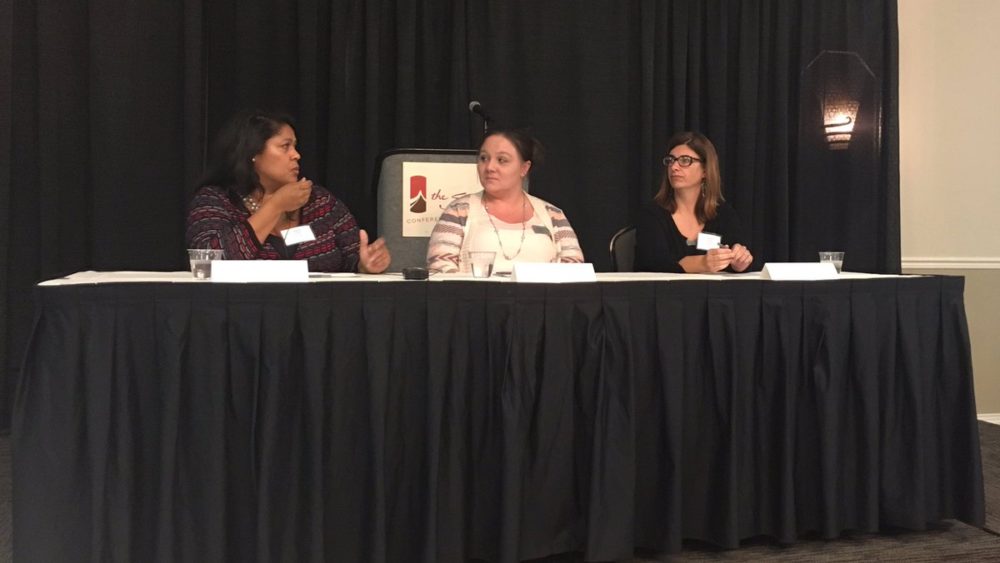 |
Sustainability: it’s an ongoing struggle in the nonprofit world. Afterschool and summer learning programs are no strangers to writing sustainability plans and working tirelessly toward this goal. For many, sustainability is elusive. For all, it’s hard work.
In November, I had the opportunity to hear from three 21st CCLC-funded afterschool providers in Colorado who have achieved success in sustaining at least portions of their afterschool and summer programs.
One of those project directors, Maria Ortiz, served as an Afterschool Ambassador in 2013 and manages a program in Poudre School District. Located in Fort Collins, Colo., the district is home to one of the first 21st CCLC-funded afterschool programs that I ever visited as a program officer at the U.S. Department of Education.
I remember being impressed during that first visit back around 2001, and hearing Maria speak again recently only strengthened my initial impression. Maria has been part of the afterschool program in Fort Collins from the beginning and has done a tremendous job finding and cultivating local champions and applying for new grants to keep the program going for more than 15 years!
Tips for sustainability success
Maria and her two counterparts, Clarice Fortunato of Englewood School District and Jovita Schiffer of Boulder Valley School District, offered many valuable insights, including these eight key sustainability tips:
- Don’t be shy—don’t be afraid to ask for what your program and your kids need.
- Talk about the impact your program has on kids and the community.
- Make the case with your school partners that school funds should be used to support afterschool and summer programs. If you are part of a school district-operated program, point out the resources that your program brings into the district to support students and share data that shows you are helping kids be successful. Bringing in other financial support for the district and helping kids succeed is a hard combo to refuse!
- Work with district leadership to maximize existing district staff’s capacity to help support your program.
- If your district has a family liaison, see if they can reach out to families to encourage them to come to afterschool-hosted events and help build the family engagement component of your program.
- Work with principals to explore the possibility of shifting para-professionals’ and specials teachers’ hours to start one hour later so they can stay for one hour after school to work in the afterschool program.
- Approach groups like local foundations, local businesses and civic groups to sponsor a kid in your afterschool or summer program. Determine the cost for one student to participate in your program for a month, a semester, a summer or a year and ask local partners to give the gift of afterschool. This can be especially effective around the holidays!
- Invite business and civic groups to visit your programs and see how kids and families are benefiting. In one community, a local business was so impressed by the program they were invited to visit that they were inspired to redirect the $5000 they had previously dedicated to a company holiday party to support the afterschool program. Now the employees visit to the afterschool program each year, have a holiday-themed party with youth, build gingerbread houses and donate the $5000 to the program.
- Look at local bond and/or mill levies to see if there is wiggle room to use those funds for afterschool. Bond and mill levies are a pretty common school funding approach in Colorado; your mileage may vary depending on your state and your community.
- Seek out volunteers to support your program. Staffing is such a significant portion of any program budget—recruiting volunteers can be a cost-effective way to bolster your team.
- Recruit AmeriCorps service members to help staff your program and to build pipeline of future members of the afterschool workforce.
- Seek out AmeriCorps members in other departments of the school district who may not be getting enough hours and engage them in the afterschool program to round out their required hours.
- Develop partnerships with college and university volunteer offices and work study offices.
- Explore internship programs at local high schools. This is a win-win: in addition to helping your program, it can build job skills for high school students. Try working with high schools to develop a process in which students are recommended and go through an application and interview process before being selected for an internship.
Sustainability for 21st CCLC grantees
For 21st CCLC grantees in many states, handling the “step-down” of funding can be a significant challenge. In Colorado and many other states, the 21st CCLC grant amounts decrease over the life of the grant period—for example, years 1 and 2 might be fully funded at the requested amount and then year three is funded at 90%, year four is 80% and year 5 is 60% funded.
The panelists shared three strategies to help alleviate this challenge:
- Use first two years of the grant to buy supplies and equipment that you will need.
- Invest in professional development significantly in the early years, for staff and volunteers.
- Explain the step-down in funding process from the beginning when meeting with partners and design partnerships in ways that can help fill the gaps in the later years.
The three project directors were enthusiastic that at least partial sustainability is possible—their stories were inspiring and their energy was boundless. But all three recognized that federal support for afterschool was essential to get their programs going initially and to maintain some of the key aspects of their programming.
Local communities can do a lot to support afterschool and summer programs, but federal funds help those local dollars stretch much further. Visit our Action Center to learn how you can help protect federal funding for afterschool.

Comments are closed.